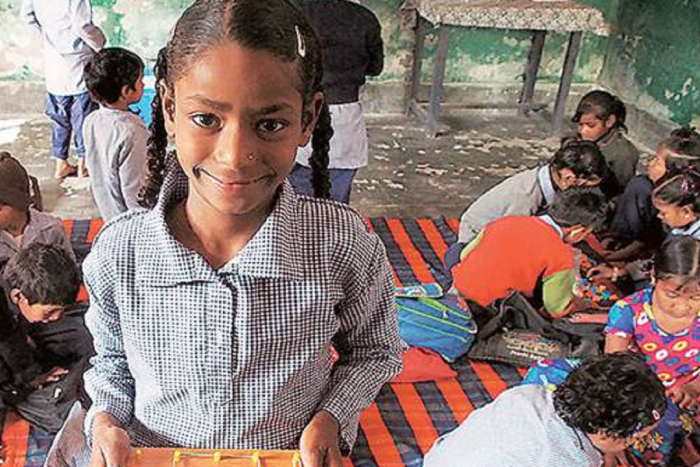Frugal tech innovations in education- Vineet Nayar

As cold winds blew into the classroom through the broken window panes, Sawan and Gita, sitting on tattered rugs in their class, curled up to keep their bodies warm. The teacher standing in front of them had two challenges. How does she teach a room full of children at different stages of learning, hungrily waiting for their mid-day meal? Second, how does she teach the lessons she herself is not sure how to teach?
This was not a story of just one classroom I saw in the winter of 2012 but the story of 14 crore children in India’s 740,000-plus government schools where learning levels showed alarming negative trends despite increased investments. As I drove back to Delhi that dark evening it was clear to me what I needed to do – talk less about the problem and try and do my best to find a solution. I quit my cushy job as CEO of a multi-billion dollar company and started working full time with these schools through Sampark Foundation. What we needed was design thinking and an out-of-the-box innovative approach that was frugal and scalable so as to impact many and not just a few.
The first step in design thinking was to answer the basic question of what exactly is the problem? Many did point to the poor infrastructure – the crumbling buildings, the broken benches, absence of toilets et al. Yes, all of this was a problem, but the real problem was how the teachers teach. Teachers are mostly uninspired, uninterested and untrained; pedagogy is flawed and outdated —thus the classroom transaction is a boring, dull and an unedifying affair.
We decided to change that by designing unique innovations in teaching tools and methods that could ignite a rural classroom. After years of research, we developed Sampark Smart Shala, a cutting-edge, technology-driven frugal solution, based on user-centric design thinking, and our entire intervention costs less than $1 per child per annum. Sampark Smart Shala uses audio technology along with a voice mascot called ‘Sampark Didi’ combined with music, stories, songs and interactive TLMs to make teaching and learning fun. Since schools in rural India don’t have uninterrupted access to electricity or the internet, a battery-operated audio box is a better choice. Such devices can be made available easily, they are affordable, need low skills to use and, ignite a child’s imagination.
For visual learners, a lot of interactive video content and activities were provided on BoT-enabled Sampark Smart Shala app, which works both online and offline. This app helps teachers revise lessons anywhere, anytime and in a non-judgmental environment and helps her teach complex concepts through games and fun activities. Sampark Smart Shala workbooks have QR codes at the end of every chapter. When scanned on a low-cost mobile phone, Sampark Didi walks the child through the lesson through an interesting animated video.
Great intentions and ideas have no meaning unless they create the desired impact. A third party assessment has shown a significant increase in learning outcomes amongst 70 lakh children in 76,000 schools across six states where Sampark Smart Shala has been rolled out through immersive training of 2 lakh teachers to change mindsets combined with relentless monitoring across every school in collaboration with the state government.
However, six years into the programme I find myself at the crossroads again. Would a significant improvement in numeracy and linguistic skills alone help these children get better jobs? Success in the real world would need life skills of enterprise, creativity and curiosity and we have to teach it while they are young and open to learning in school. So back to the drawing board to find frugal innovative ways to solve the learning plus livelihood problem our rural children will face tomorrow, a step at a time!
(The writer is former CEO, HCL Technologies and founder chairman, Sampark Foundation)

